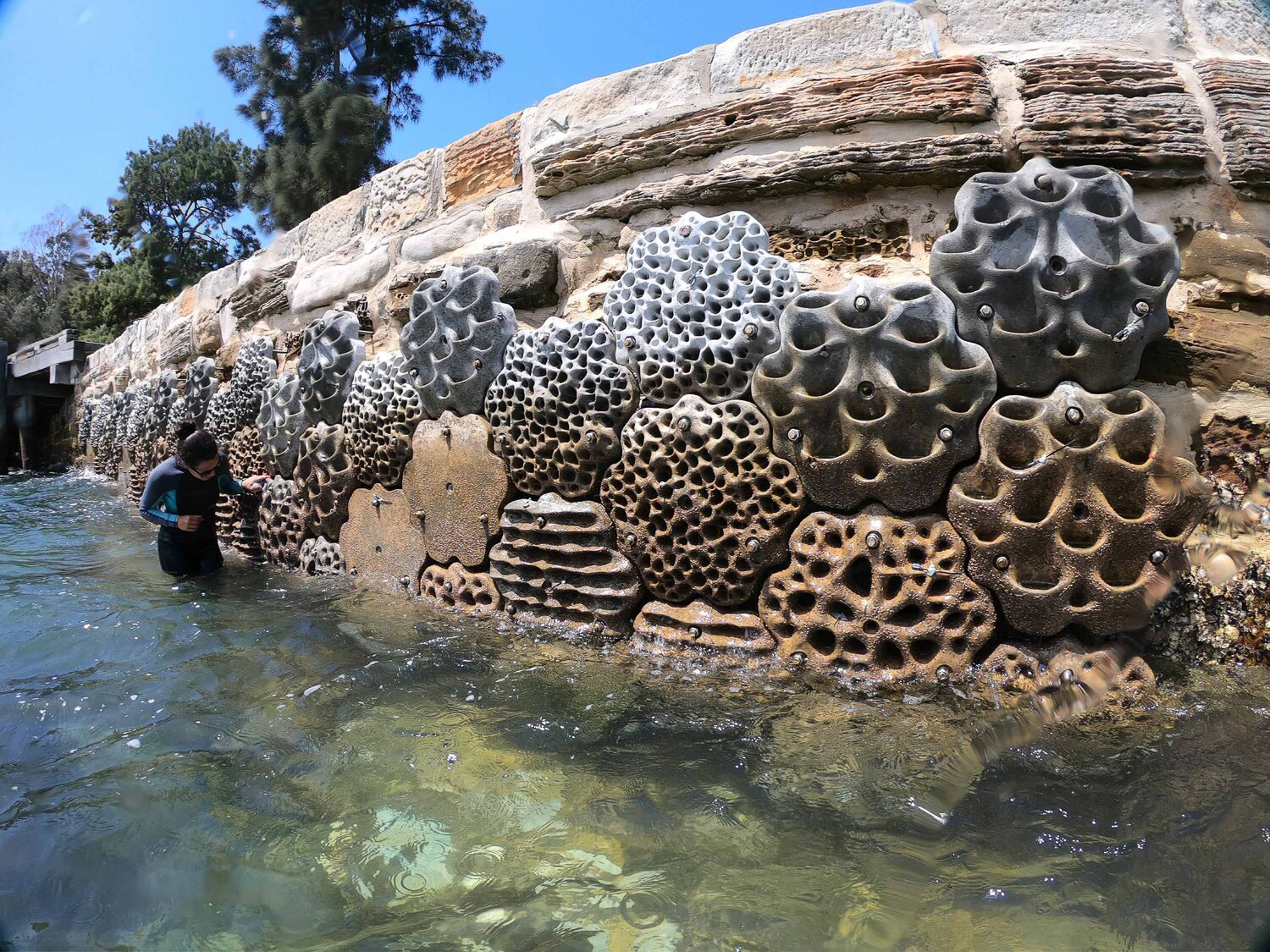<< Back to Lion homepage
Designing the future: Making waves in marine restoration

Design horizons were significantly widened for some of our Year 11 Design Technology students when they recently collaborated with an OW making an international name for himself in marine restoration design. Paul Munn explains.
Assembling a giant Lego set underwater in the Maldives sounds like something from a surrealist dream, but industrial designer Alex Goad (OW2007) did just that with his Modular Artificial Reef Structure (MARS) in 2018.Designed on a computer, 3-D printed and cast in ceramic, it is the world’s largest 3D printed artificial reef.
Alex transplanted coral fragments onto the assembled structure, providing a rigid skeleton for the corals to grow on, with the goal of transplanting them back onto natural reefs. Restoring marine habitat is critical work, but for Alex, that doesn’t mean there can’t be a playful element: ‘I just wanted to play with Lego underwater,’ he said. ‘That was basically the inspiration for the project!’
Levity aside, Alex and his company Reef Design Lab, which he founded in 2015, are addressing weighty problems facing our marine ecosystems.
A unique design company that combines traditional and digital production techniques to create coastal habitat infrastructure and artificial reefs, the Lab collaborates with international research partners to enhance the ecological performance of marine structures. It’s leading-edge work and the MARS system is just one of a series that Alex has designed.
Another significant one is ‘Living Seawalls’, a collaborative project with researchers from the Sydney Institute of Marine Science. The collaboration has 500 panels, mimicking the habitat features of natural shoreline ecosystems, attached onto flat seawalls throughout Sydney Harbour to provide habitat for animals and plants and protection from predators and high temperatures. It's been attracting a lot of attention. ‘We’ve installed almost 3,000 panels around the world so far,’ says Alex. ‘This research is creating an ecological blueprint for how we can design marine infrastructure in the future.’
The arresting element in Alex’s designs is the seamless interplay between the functional and the aesthetic: while the structures are inherently practical and purpose-built to restore and support marine ecosystems, they’re also beautifully sculptural. It’s something that has attracted the attention of some serious art institutions – he has exhibited in Australia and internationally, and his MARS system is part of the permanent collections at New York’s Museum of Modern Art and the Helsinki Design Museum.
Alex studied Industrial Design at Monash University, but his design journey began at Wesley, where his passion for sculpture found full expression. ‘I loved working with clay and firing things at Wesley,’ he says. ‘It was really all about hands-on stuff, and we still use a lot of those clay modelling techniques that I learnt at Wesley now.’
He recently returned to where it all began. Excitingly for a group of Year 11 IB Design Technology students, they spent Term 2 designing and making prototypes for their own marine structures, inspired by the research they did with Alex. It started back in March when students from St Kilda Road and Glen Waverley campuses went on research excursions to Alex’s studio in Mentone, to the St Kilda Beach coastal zone and to the Melbourne Aquarium. This sparked off their subsequent, term-long design projects, where the students designed and produced their own seawall tiles and other marine restoration and protection devices.
Alex explaining moulding techniques to St Kilda Road Design students in his studio

Erin Rahilly casts her seawall tile

Maeve Hoare and Talia Aktepe prepare to cast their moulds in plaster

Student Maeve Hoare was really interested in applying Alex’s approach to design using a blend of digital and hands-on techniques. ‘We used a combination of Fusion (CAD software) to design the product and at the practical level, worked with the plaster to make the sea wall tiles – so you get to see how it all connects together.’
For a good many students, the project brought home the critical role that collaboration plays in creating good design. Says Saskia Elliott, ‘The whole class is coming up with their own individual designs but throughout the process, we have collaborated as a group, from sharing ideas and assisting each other with Fusion, to discussing the issues that these projects are targeting.’
'Our students have a heightened awareness about environmental issues and are passionate about sustainable product development,' says Head of Design Technology at St Kilda Road Campus, Gayathri Wijesekera. ‘As such, working on the Reef Lab Project with Alex has allowed them to find their own unique approaches to marine conservation.’
Alex has clearly had a big impact on students. ‘It inspired me to look at how I fit into the design world and what I may be passionate about in the future,’ said Talia Aktepe. Ishaan Kesarla agrees. ‘Alex does design and now so do I; it shows that I could go on to do something similar to Alex on a large scale as well, actually making a difference to marine life; it just shows us what is possible.’